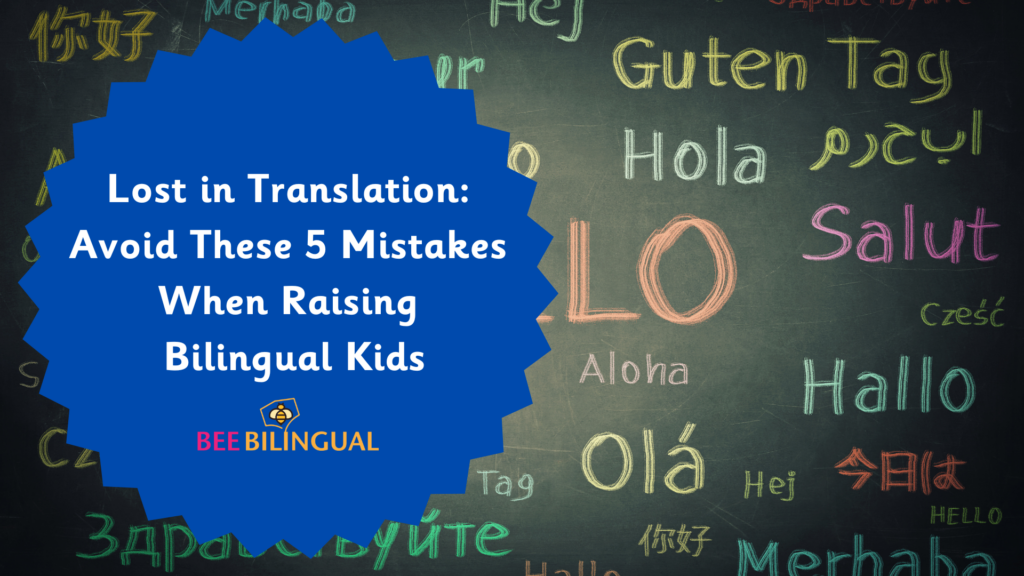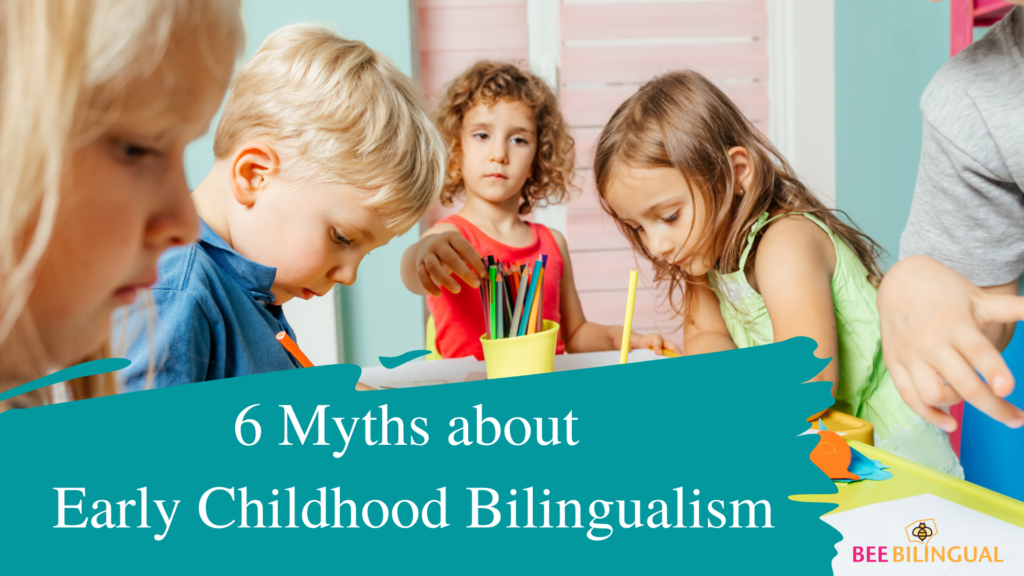Raising bilingual children is a wonderful gift that opens doors to cultural understanding and enhanced communication skills. However, it’s not without its challenges. As parents, we may inadvertently make mistakes that hinder our children’s language development. In this blog post, we will explore five common mistakes parents make when raising bilingual kids, and provide valuable suggestions on how to avoid or rectify them.
5 Common Mistakes When Raising Bilingual Kids
Before we get started, it’s important to keep in mind that our suggestions are intended as guidelines rather than strict rules. Each child’s bilingual journey is unique, and what works for one child may not work exactly the same for another. Various factors, such as individual language preferences, exposure opportunities, and family dynamics, can significantly influence language development. As a parent, it is crucial to adapt these suggestions to fit your child’s specific needs and circumstances. It is essential to stay attuned to your child’s progress, interests, and challenges, and be flexible in adjusting your approach accordingly. Remember, nurturing bilingualism is a dynamic process that requires patience, adaptability, and a deep understanding of your child’s unique language-learning journey.

1. Neglecting Consistent Language Exposure: One major mistake is failing to provide consistent exposure to both languages. In some cases, parents may prioritize the majority language, assuming the minority language will naturally develop. However, this can lead to imbalances and hinder fluency in the minority language. To rectify this, create a language-rich environment by speaking both languages consistently at home and encouraging interactions in the minority language. Consistency is key to ensure your child develops strong proficiency in both languages.
2. Mixing Languages: Another common error can be code-switching or mixing languages during conversations. While it may seem convenient, it can confuse children and hinder language separation. Instead, try to maintain language boundaries by speaking one language at a time. This will help your child develop a solid foundation in each language and facilitate their understanding of language structures and vocabulary.
Note: Mixing languages can work for some bilingual families. In certain contexts, such as code-switching within a cultural or social setting, mixing languages may be a natural part of communication. Some families intentionally adopt a mixed-language approach, known as “translanguaging,” to foster bilingualism and maintain strong connections to their cultural heritage. It’s important to recognize that language use and preferences can vary among bilingual individuals and families. Ultimately, the key is to find a balance that supports your child’s language development while respecting their unique linguistic journey.
3. Lack of Community and Cultural Engagement: Isolating language learning within the confines of home is a missed opportunity. Many parents overlook the importance of community and cultural engagement in bilingualism. By actively involving your child in cultural events, language clubs, and connections with native speakers, you create authentic language experiences. If possible, encourage participation in language immersion programs, playdates, or cultural outings. This exposure will enrich your child’s language skills and foster a deeper appreciation for their bilingualism.
4. Underestimating the Role of Literacy: Language development extends beyond spoken fluency. Neglecting the written component can limit your child’s ability to fully engage with their heritage language. Emphasize literacy skills by introducing books, magazines, and educational resources in the minority language. Encourage reading, writing, and storytelling in both languages. By nurturing their literacy skills, you provide a well-rounded language foundation that supports their overall bilingual development.
5. Lack of Patience and Perseverance: Raising bilingual children requires dedication and patience. It’s common for parents to become discouraged when their child’s language progression seems slow or when they mix languages. However, giving up or switching to a single language can hinder their linguistic growth. Instead, stay committed to the bilingual journey, recognizing that language development takes time. Encourage your child with positive reinforcement, celebrate their achievements, and seek support from other bilingual families or professionals who can provide guidance and reassurance.
Raising bilingual children is a rewarding but challenging journey. By avoiding these common mistakes—neglecting language exposure, mixing languages, lack of community engagement, underestimating literacy, and impatience—you can create a strong foundation for your child’s bilingualism. Embrace the beauty of their language journey, celebrate their milestones, and provide them with the support and resources they need to thrive in both languages. With your guidance, your children will become confident, culturally enriched bilingual individuals, ready to navigate the world with ease.


